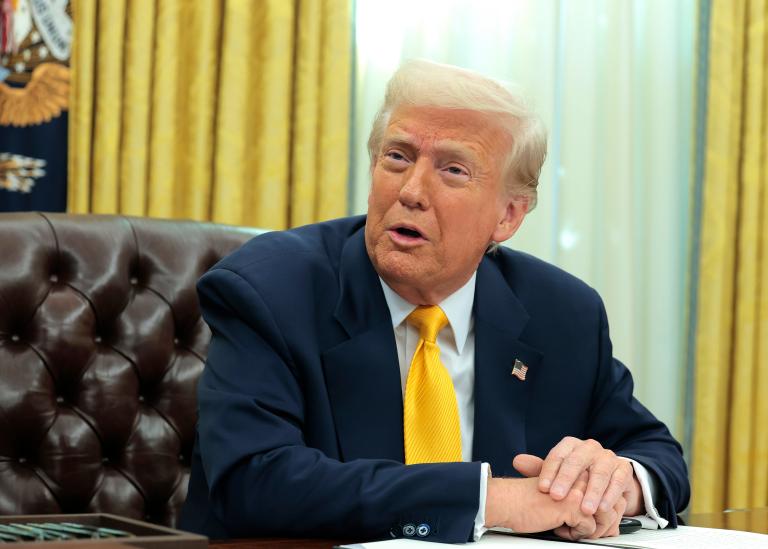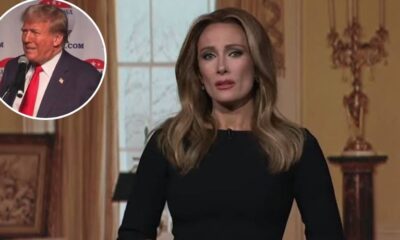CELEBRITY
President Trump Imposes Sweeping Tariffs on the Rest of the World: Here’s how the world is reacting and how Americans could be affected…

U.S. President Donald Trump announced the imposition of sweeping reciprocal tariffs on virtually all global trading partners, marking a dramatic shift in international trade policy. The move, which upends decades of rules-based trade frameworks, has sparked a firestorm of reactions from world leaders, economists, and industry experts, while raising concerns about its potential effects on American consumers and businesses.
A Bold Policy Shift
The tariffs, set to take effect in the coming weeks, aim to address what the Trump administration describes as “unfair trade imbalances” with countries across Europe, Asia, Latin America, and beyond. The policy imposes a uniform tariff rate on imported goods, with specific rates yet to be fully detailed but expected to range between 10% and 25%, depending on the country and product. Trump, speaking from the White House, framed the decision as a necessary step to “protect American workers and bring jobs back home.”
“For too long, we’ve let other countries take advantage of us,” Trump said. “These tariffs level the playing field. If they tax our goods, we’ll tax theirs—simple as that.”
The announcement follows months of speculation about Trump’s trade agenda in his second term, building on his first-term strategy of targeted tariffs, particularly against China. However, this latest policy’s global scope has caught many by surprise, threatening to reshape supply chains and international relations.
Global Backlash and Concern
The international response has been swift and largely critical. In Brussels, European Union leaders condemned the tariffs as “a step backward for global cooperation,” warning of retaliatory measures that could target American exports like agriculture, technology, and whiskey. European Commission President Ursula von der Leyen stated, “This is a lose-lose scenario. We urge dialogue over escalation.”
China, a frequent target of U.S. trade measures, signaled it would respond with “proportionate countermeasures,” potentially intensifying an already strained economic relationship. Chinese state media called the tariffs “a reckless gamble that will harm the U.S. as much as anyone else.”
Smaller economies expressed alarm as well. Canadian Prime Minister Justin Trudeau described the policy as “deeply troubling,” given the integrated nature of U.S.-Canada trade, while Mexico’s government hinted at legal challenges under the USMCA trade agreement. Developing nations, reliant on exports to the U.S., voiced fears of economic destabilization, with Brazil’s finance minister warning of “catastrophic ripple effects.”
Not all reactions were negative, however. Some leaders, particularly in countries with populist governments, praised Trump’s approach as a model for protecting national interests. Hungary’s Prime Minister Viktor Orbán called it “a courageous stand against globalism.”
How Americans Could Be Affected
At home, the tariffs promise both opportunities and challenges. Proponents argue they will boost domestic manufacturing by making foreign goods less competitive. The National Association of Manufacturers cautiously welcomed the move, with its president noting, “This could incentivize investment in U.S. production—if executed carefully.”
Yet economists warn of significant downsides. Higher tariffs are expected to increase the cost of imported goods, from electronics and clothing to food and automobiles. A study by the Peterson Institute for International Economics estimates that the average American household could see annual costs rise by $500 to $1,000, depending on the final tariff rates. Retail giants like Walmart and Amazon have already hinted at potential price hikes.
Industries reliant on global supply chains, such as automotive and tech, face uncertainty. Ford Motor Company issued a statement saying it was “assessing the impact,” while tech firms worry about disruptions to components sourced from Asia. Small businesses, often less equipped to absorb cost increases, could be particularly vulnerable.
Consumers, meanwhile, are bracing for change. In interviews across the country, reactions ranged from cautious optimism to outright frustration. “I get wanting to help American jobs, but my grocery bill’s already high enough,” said Sarah Mitchell, a single mother from Ohio.
Economic and Political Implications
The tariffs come at a time of relative economic stability in the U.S., with unemployment low and inflation moderating. However, analysts fear the policy could reignite inflationary pressures, prompting the Federal Reserve to reconsider its monetary stance. Stock markets dipped on the news, with the Dow Jones Industrial Average falling 2% by midday April 2.
Politically, the move has deepened partisan divides. Republican lawmakers largely rallied behind Trump, with Senate Majority Leader Mitch McConnell calling it “a bold vision for American sovereignty.” Democrats, however, accused the administration of risking a trade war. House Speaker Nancy Pelosi warned, “This isn’t leadership—it’s chaos that American families will pay for.”
What’s Next?
As the world awaits further details—expected in a formal policy rollout next week—global trade partners are preparing their responses, and U.S. businesses are scrambling to adapt. The tariffs’ success will hinge on execution, enforcement, and the administration’s ability to weather inevitable retaliation.
For now, President Trump’s gamble has thrust trade policy back into the global spotlight, leaving Americans and the world watching closely to see who blinks first in this high-stakes economic standoff.
























